Hello,
I would be worried that the licking is an indication of pain. Limping can be indicative of many things to. like injury, illness or Orthopedic issues. Please see a vet about this. There is no other credible advice I can give from here.
Kitten with completely atonic colon, possible causes? (Long text ahead)
So Nov. 3th in the evening we got 2 kittens, estimated 6 weeks old, thin. However due to being cold outside they already had very thick fur, so it wasn’t visible how thin they were. Weight was 550 & 650gr.
The finder said they have been more active before and only now they were able to get those two. They borrowed to live traps to get the mother and another kitten.
Both were seen eating. They were treated against worms (Milbemycinoxim/Praziquantel) and fleas (Lotilaner)
Nov 4th: Overnight everything was eaten, poo was solid. Kittens were responsive and alert. To the evening only half was eaten. Poo was still solid.
Nov 5th: Nothing was eaten over night, the little one seemed a bit weaker. I started to feed them with a syringe. They started with diarrhea, but that sometimes happens when feeding with a syringe.
Nov. 6th: They still don’t eat by themselves. The smaller one still seemed weaker, but otherwise it seemed fine. A bit diarrhea. In the evening I found it the litter box, not being able to stand, barely reacting. It hat vomited (at least it looked like it), and still had poo stuck on it. It was immediately brought to a vet. It received glucose solution s.c., something against vomiting, pain and an antibiotics. Lung sounded free, heart (ultrasound) was fine, too. A test of parvovirosis came back negative. I took both of them home that night, so I could feed it smaller portions more often and to give more fluids. 2 hours later to was able to stand again. I fed them every 3-4 hours, fluids every 6 (only small amounts obviously). It was lying on a warmth mat. The bigger one was fine, but avoided it’s litter mate.
Nov. 7th: No further improvement. None of them was eating on their own. The smaller one was still lying down most of the time, sleeping, but would react when I came to feed them. It would stand up and walk to the litterbox between the feedings, but the poo had a weird consistency. Not really diarrhea, but veeeery sticky, so it always carried it back to it’s sleeping place. So I had to clean it before every feeding. A test on giardia was positive, treatment started with Carnidazol. Continue to feed them with a Syringe and fluids for the smaller one. Fluids were always absorbed to the next feeding, but it still was a bit dehydrated (skin fold test). The bigger one would play in between and seemed fine otherwise.
Nov. 8th: No changes in the smaller one during the day, still weaker, able to walk, sit and stand, but sleeping most of the time. Today there was rarely poo in the toilet. I assumed that the treatment started working and it was a good sign (although I already had the feeling that something was wrong… wish I would have trusted that feeling). In the evening it seemed weaker, but would still accept being fed with a syringe. It felt different, less body tension, but would still walk away/go to the t. 10pm feeding. More calm, didn’t want to eat that much, peed on me. Meowed louder during giving the fluids than usual and tried to get away. 2am clock, the fluids weren’t absorbed completely, it’s abdomen felt like a sponge. I only fed a tiny amount. 6am weaker, would lie down immediately, breathing was shallow and faster, meowing, I didn’t feed it, fluids still not absorbed. Rushed to the vet.
-> Heart had a low frequency, breathing fast and shallow
-> X-Ray lungs were free, only a tiny amount of fluids in the abdomen, however the complete colon and stomach were filled with food. There was no visible blockage or air.
-> Ultrasound: Absolutely no movement in the colon/stomach, no blockage or air seen either. Kidneys and liver seemed fine
-> Punctation of the abdomen: ca. 3-4ml of fluids, lots of proteins, a bit of blood. Didn’t look like FIP. Possible that the fluids came out of the colon.
It was given something against vomiting, pain, antibiotics, something to help the cardiovascular system and something to get the colon moving again. To help with its breathing got a mask with additional oxygen. However in the next hour it got worse, so we decided to let it go. After it was gone food came back out of it’s mouth. And it didn’t even smell like it had started to digest.
It’s littermate is still with me and fine. It started to eat on its own yesterday.
Now I obviously ask myself what i could have done better/different. By now I think I should have started with additional syringe feeding earlier – at least with the smaller one. And I should have reacted when my feeling told me that something was wrong, even when there were no obvious changes yet. I somehow have the feeling that I sis something wrong and killed it. Did I give too much fluids (but lungs were free and only a bit fluid in the abdomen)? Did I feed too much? Other kittens eat even more without problems – and the other one is fine.
And what can be the causes for the complete stop of movement in the colon/stomach?
I know that FIP can cause this and an ileus (but there were no visible blockage, everything was filled with food), are there other causes? Can giardia do this?
Comments
Hi so my pug seems like he is in pain on his back leg he walks on it but usually liftes it up and he keeps chewing on his paw what can I do
Comments
took are one year old cat in to see the vet because he could not urinate. On exame the vet drew fluid and did a ultrasound. There was blood in the urine and the ultrasound showed some indications of foreign bodies but not crystals. She gave us Clavamox a antibiotic, prazosin for inflammation and Buprenorphine for pain all was ok for two weeks then are cat Leo was back in trouble again with not urinating . Same m.o. , and she told us about the PU surgery, or leaving him there for a few days while they but a catheter in him to reestablish his bladder function. My question is this, we feed are cat raw food that we make from chicken livers and hearts with bone ground up for fiber . Leo drinks lots of water so we are wondering why this is recurring in such a young male cat that is a outdoor cat . Is there something we are missing in Leos care or prevention of this problem . love your videos on youtube and saw the cat being unblocked with a catheter, wish we could do that at home.
Comments
Hi, i need all the advice and help you guys can give me. I have a two-year-old French bulldog and yesterday morning we realized she was a little paralyzed from her hip down she ate and pooped fine. Took her to the emergency room they diagnosed her with IVDD. They told me they need to do surgery on her spine and I can’t afford the surgery process. Is there other options? She’s on steroids and pain medication
Prednisone
Gabapentin
Prazonsin
Please help us she means the world to our family!
Comments
I recently adopted my cat, Critter, as he was on my grandma’s farm and had a paw infection. We brought him inside and started him on antibiotics. Unfortunately, the infection did not respond as hoped and he had to have his leg amputated.
After this, he was back to a perky young cat – playing and eating well. A week after surgery I noticed a bump just below the incision. I asked my vet if I should be concerned, and she said not unless it’s hot and that it’s probably a seroma. This made sense to me as he was more active than he probably should have been post surgery.
The next day, that bump burst and started leaking fluid. It was pink and not super cloudy, not smelly or hot. I kept and eye on it all day, and found that it never stopped leaking, so today I took him to the vet. There appears to be a small hole and it’s infected. It’s not at the site of the incision and the incision looks perfect.
He’s on a higher dose of antibiotics now, and some more pain meds as it is tender. He had the wound flushed this morning, and goes again in two days for another flushing.
I guess my question is – is it possible this is the same infection as before? The vets who performed the amputation said they were positive they got any infection (even taking the lymph node), I’m hoping that this is secondary and that maybe the bump was caught on something, or he scratched it open?
ETA: 1st photo is Saturday night, 2nd photo is Sunday afternoon, 3rd photo is today after flushing and rest.
Comments
Hello. I have a 15 year old Dachshund, Brody, who is currently suffering from a cervical IVDD injury. This is Brody’s third IVDD injury in his short life, however, it is the most severe. We are not sure what happened this time since Brody was injured when we got home from work. Today is day 7 since Brody went down. While Brody is able to right himself from the lateral position, he does spend most of his time on his side. Brody is able to lift his head and look around, he can scoot himself from one position to another, he has a fantastic appetite, he has feeling in his hind quarters and only deep pain in his front two. My poor boy is not able to consistently empty his bladder and has required cathing; as of today, with the help of lactulose, Brody has been able to empty his bowels, incontinent.
Brody is not a candidate for surgery due to his age and other health conditions, so we are managing him conservatively. Brody has been seen by his regular vet where he was started on prednisone, robaxin, & gabapentin; he also takes CBD and I just started him on tumeric paste. Brody has seen a holistic vet where he had acupuncture done with electro stimulation.
My question is, how long do I give him before we decide that enough is enough? Brody is not in extreme pain, but he does have occasional neck/shoulder spasms that make him scream. I just am afraid of putting him through more than what I should just because I am not ready to let him go. Brody has been my guy for 15 years and I cannot imagine life without him, but I don’t want him to suffer. I have watched Dr. Magnifico’s YouTube videos about giving IVDD dogs time, but what is a realistic timeframe?










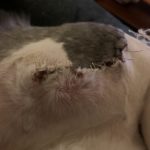
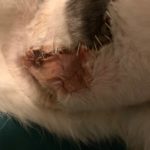


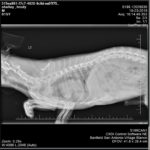
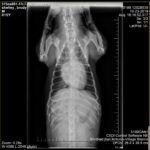
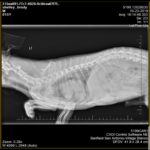

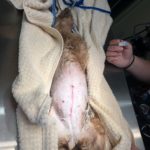
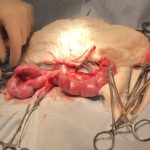
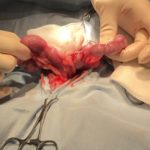
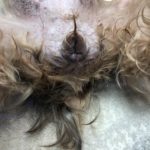
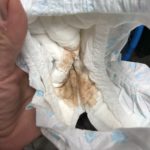



Hello,
First it is important to give yourself a very firm and big pet on the back. You have gone above and beyond and saved these kittens from a slow awful death. Next this isn’t a question about the colon this is a question about what is causing all of the clinical signs you are seeing. Ileus (slow or absent moving gi tract) has many many causes but something caused it. Probably has everything to do with the same something causing everything else you are seeing. There is a huge list of possible causes. Infection, congenital disease, malnutrition before they got to you. Infectious disease like rabies, etc etc. my recommendation is to stick with the basics of keeping them warm, fed, and treated for parasites (internal and external). After that (or before your preference often dictated by amount owner can spend) is to keep asking for second opinions and keep running. Diagnostics. I really applaud your dedication and I have to say as much as sometimes we try we just aren’t able to save them all. This is especially true with kittens. Which have been some of the most rewarding and most heart breaking of all the cases I have seen.
Hello,
thanks so much for your answer and the nice words. Malnutrition would be definitly possible, it’s nearly winter here and they were thin when we got them. Maybe it was too much for the gi tract after not getting much for some time.
What additional diagnostics would you have recommended to do? I think bloodworks could have been an option, but what parameters? Just the large profile or other tests (besides FIV/FelV)?
I added the xRay. I was only present at the ultrasound, where I couldn’t see air. The xRay shows air in the stomach and colon. But otherwise everything is just… filled – theres not really something visible. Kidney and Liver could be seen in the ultrasound and looked normal. The “swelling” on it’s belly is the fluid that wasn’t absorbed – altough it felt a bit harder that a fluid bubble under the skin usually does.
The other one is still fine, active and playing, starting to eat on it’s own. Purring and cuddly. Yesterday we got the 3rd littermate, the mother is nowhere to be found until now. I haven’t seen the new one eat yet, but it was hungry when i fed it with a syringe – and it liked it. So I’ll just feed it a bit too, just not as much. That’s also nice for bonding. But it ate what was in the trap – so it knows cat food. It’s still very afraid, so I guess it will mostly come outside when I’m not in the same room.
We also got another one, a little male that the fidners named Nero – same area but not same place – but same age (a bit younger possibly) and also black furred. But this one is in bad shape, too. Very calm and tired. Lying most of the time. It’s just skin and bones, dehydrated. I haven’t seen it eating or using the litter box yet – and since the other two use it and the towel it lays on is wet sometimes I think it doesn’t really go. But it is able to stand and walk – I think it’s just to tired/weak to do so without need. This one is also fed every 3-4 hours and gets fluids. I heard him sneezing, so maybe it’s getting cat flu.
All were treated against internal and external parasites and no diarrhea until now from the new ones.
Thanks again for taking your time to read my wall of text(s) and answering so detailed.